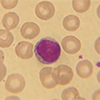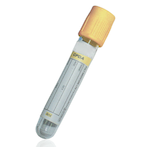Potassium (serum)
Specimen Volume
2.0 mL bloodSample Preparation
Centrifuge - do not leave on cells overnight
Turnaround Time
1 daySample Processing In Laboratory
Usual
Sample Stability
14 days at 4°C
General Information
Potassium is the main intracellular cation. Small changes in the distribution of potassium can give rise to medical emergencies. The serum and urine concentrations of potassium reflect a complex interplay of hormonal and other systems that regulate the intracellular content. The main regulators of potassium concentrations in serum and urine are, insulin, aldosterone, catecholamines and acid base status. Diseases of the kidney, adrenal and any process that affects acid base disturbance will affect plasma potassium concentration. Crush injuries are also a cause of hyperkalaemia.
High potassium concentrations can give rise to a medical emergency requiring rapid intervention. Changes in potassium concentration affect the electrical conductivity of muscles and cardiac muscle and in high concentrations can cause cardiac arrest.
Patient Preparation
None
Notes
Samples left on cells and haemolysed samples will not be analysed
Note: Insulin, corticosteroids, furosemide, thiazides can decrease potassium. Potassium sparing diurectics, ACE inhibitors can increase potassium.
Reference Range
• Adults: 3.5 – 5.3 mmol/L
• Neonates: 3.4 – 6.0 mmol/L
• Infant: 3.5 – 5.7 mmol/L
• 1-16 years: 3.5 – 5.0 mmol/L
Source of Reference Range
Pathology HarmonySpecifications
-
EQA Status:
NEQAS
- EQAS Scheme: Yes








